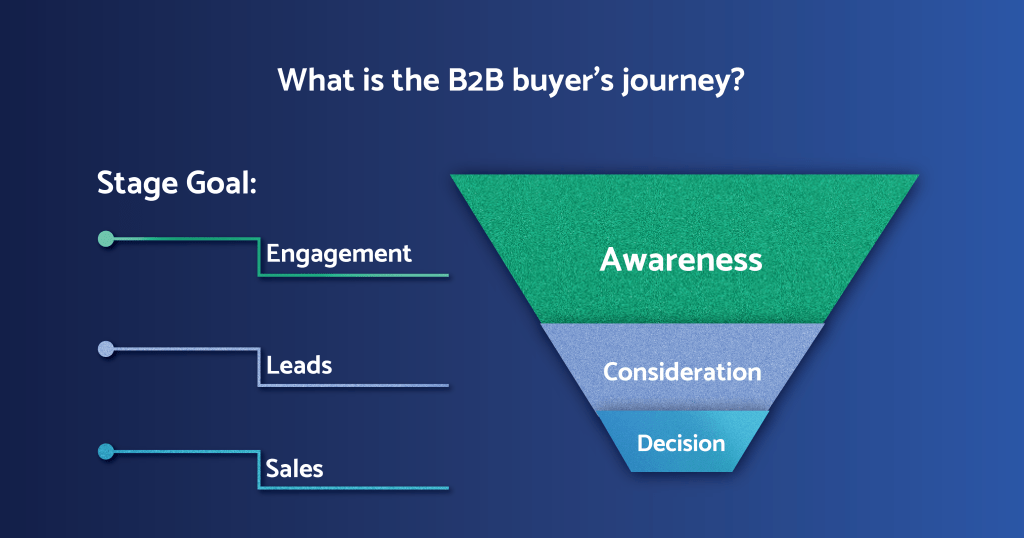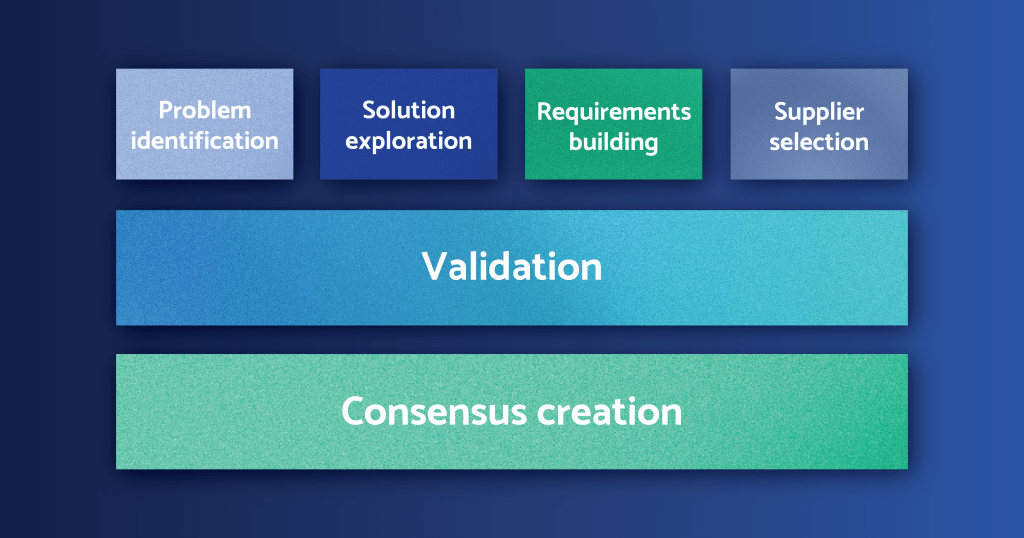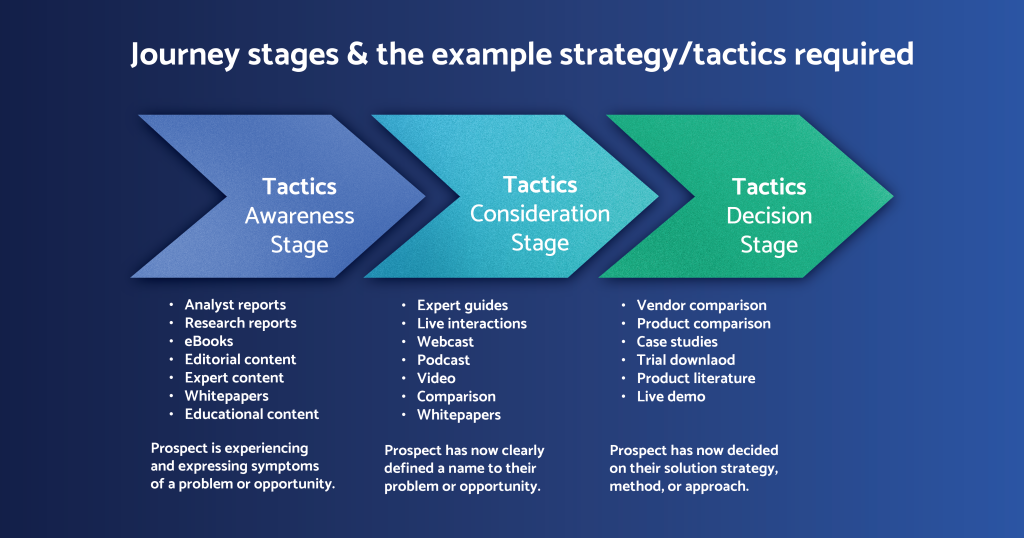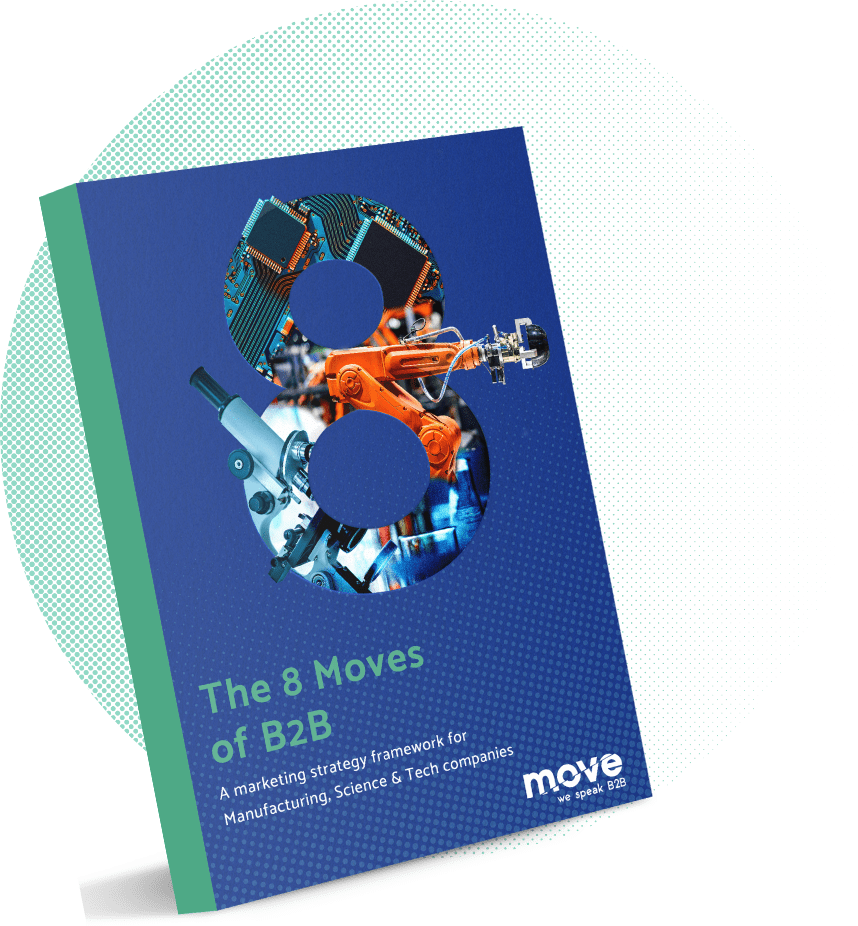Understanding the B2B buyer’s journey in digital marketing
The buyer’s journey in digital marketing is changing and your strategy should be too. Stop shouting about why your product or service is amazing and show your customers value!
Nowadays, your potential customers aren’t always willing to make a purchase on a whim – especially in the B2B sector, where purchases are much more considered and high-ticket. It can take days, weeks, or even months of careful thought and consideration before they commit to buying.
If you spend all your time cold calling or spamming leads as soon as they arrive in the CRM, you’re likely to hear a lot of ‘no, thank you’ and ‘I’m not interested’. It’s not because they wouldn’t ever make a purchase. It’s because you got in touch too soon. After that, you’ve lost them forever.
This is particularly prevalent in digital purchases. Because the buyer can’t immediately see and touch the product, they’re less trusting of its credibility. They take longer to make a decision and, usually, this extends the buyer’s journey even further.
There’s no way to avoid the length of this process as a B2B business. However, you can positively transform its impact on your sales by understanding each stage of the buyer’s journey and identifying which digital tactics are best suited for that stage.
What is the B2B buyer’s journey?
The B2B buyer’s journey is the process buyers go through to become aware of, evaluate and purchase a new product or service.

The buyer’s journey is a three-step process:
- The Awareness Stage: The buyer realises they have a problem within their business.
- The Consideration Stage: The buyer researches a few problems and ascertains their exact issue. They then compare and contrast solutions to that problem.
- The Decision Stage: The buyer narrows down the solution to one purchase and makes the buying decision.
There is also a more expansive version of the B2B buyer’s journey created by Gartner. This examines the buying journey in an even more granular, elongated way, proposing the questions a B2B buyer is asking themselves at each stage:

To understand how to best help customers advance through a complex and highly considered purchasing process, six B2B buying ‘jobs’ should be identified that customers must complete to their satisfaction to successfully make a buying decision:
- Problem identification or “We need to do something.”
- Solution exploration or “What’s out there to solve our problem?”
- Requirements building or “What exactly do we need the purchase to do?”
- Supplier selection or “Does this do what we want it to do?”
- Validation or “We think we know the right answer, but we need to be sure.”
- Consensus creation or “We need to get everyone on board.”
A combination of both of these frameworks generally works best to accurately pinpoint the correct buyer’s journey in digital marketing. Through implementing both strategies, we can map our short-term, mid-term and long-term pipeline into each stage and adapt our tactics to best engage them and push them further towards a purchase.
The difficulty is that the process is increasingly complex to achieve for most B2B businesses.
The typical B2B customer’s buying journey is getting longer and more complex
In recent years – especially in these economic times – there are so many more factors and people to persuade than the initial stakeholder. Of course, these factors grow even more with high-ticket investments.
The typical stakeholder group for a complex B2B product or service generally involves six to ten decision makers, each possessing four to five pieces of information that have been gathered independently to be discussed with the group. At the same time, the set of options and solutions up for consideration is constantly expanding, as new technologies, products, suppliers and services come to light.
These multi-layered dynamics make it increasingly complex for leads to make purchases – and for sellers to make sales.
This is why it’s so important to start segmenting your leads, prospects and even customers in the buyer’s journey. When you know what stage of their decision process they are most likely at, you can better tailor messaging and tactics to their unique circumstances.
Mapping your CRM to the B2B buyer’s journey
In order to begin mapping your leads and your business’ buyer’s journey, you’ll first need to audit your data and segment your potential customers. This helps you to narrow down what stage each prospect is at and who is most likely to make a purchase.
Step 1 – Data auditing
In this step, you’ll be auditing all the CRM data you already have on your potential and current customers. You might focus on industry, company size, location, technologies used or other factors. Discount companies that aren’t right for your business or aren’t likely to make another purchase, but keep those which might have a potential interest for further segmentation.
Step 2 – Plan your buyer’s journey
Once you’ve got your list of qualified leads and current workable customers, narrow them down into stages and tiers, unique to your company’s marketing and sales process. These could be divided into your most important tier 1 customers – your key accounts that you want to tailor messaging to first – and then further tiers. This way, you can develop a strategy for the maximum ROI for your marketing activity and investment.
Step 3 – Map according to stage & pain points
Though you can divide the businesses in your tiers by industry, often requirements and pain points will go beyond the sector in which they’re based. You can often determine requirements and challenges by what might drive your customer to your business – do they need more efficient software, or are their current products/services at risk of being deemed out-of-date? Do they simply just need more new customers themselves? Are they struggling with a specific challenge?
Step 4 – Attach a strategy to each stage of the journey
Now you’ve got your comprehensive list of potential and current customers mapped to each stage of the buyer’s journey, it’s time to work out how you intend to tailor your digital marketing strategy and tactics to where they sit. This will include specific platforms and messaging based on whether a prospect is in the awareness stage (top of the funnel), consideration stage (middle of the funnel) or decision stage (bottom of the funnel).
Journey stages & the strategy/tactics required
Generally, every stage within the B2B buyer’s journey in digital marketing has a certain strategy and suite of tactics attached to it. These are platforms, ways to engage and methods to attract the leads or current customers you have already mapped into your organisational journey. The complexity that an expert digital marketer can work through (and a great reason to have one available) is that each stage likely requires multiple tactics at some point, but with a slightly different strategy and messaging behind it.
Those blurred lines are only visible once you set out the plan, organised via a framework like the buyer’s journey:

This guide will help you to understand what might work best, although it is by no means a snapshot of every organisation, as each sales and marketing journey is different.
Example Tactics – Awareness Stage
While having fresh users visiting your website is a good thing, turning this into the right kind of traffic is the key. As a company, you need to establish the profile of your ideal customers and, of course, this requires well-researched buyer personas from the very start of the campaign.
Paid Social
Paid social advertising (likely through LinkedIn for B2B markets) is one of the best ways to narrow in on a specific audience – especially if you know your audience is based on current customers or target accounts. You can place ads directly in front of a very specific audience and start to create brand awareness and recall, while building an audience list through downloadable content and well-placed, well-written and valuable content. The drawback of this tactic is that, for every click you generate, you pay a fee. However, this is a small price to pay for quick access to the exact audience you are trying to convert.
SEO
When a prospective lead begins the awareness part of their buying journey, they will usually begin with research on a search engine. So, it’s very important for you to appear wherever they’re searching. Select words that will attract the type of lead that you want to consume your content. Building links around the keywords that your ideal buyer is searching for will also help you to achieve this. SEO is a long-term game, however, so don’t expect short-term results. This is one tactic everyone tries, but few get right. The companies that do, however, reap the rewards.
Example Tactics – Consideration Stage
Paid Google Campaigns
In the consideration stage, your buyers now understand what their problem is and are seeking the right solution. They might have also already interacted with the tactics you used in the awareness stage. At this point, you can afford to be a bit more direct in your messaging and start talking about making an enquiry. Paid Google Ads are very similar to paid social, in that you can pay a fee per click to put yourself directly in front of potential leads when they are making searches related to your product. The key difference is that leads via Google searches have a much higher intent to purchase, as they are likely considering several solutions – you just have to convince them yours is the correct one.
Email Marketing
Email marketing is often key in the consideration stage, largely on a post-enquiry basis. This means that someone has enquired for more information during the middle of the funnel, but hasn’t made a final decision on the supplier. Creating extra value for a potential customer (or even current customer, if they can be upsold/cross-sold) with personalised emails or messaging is a great way to generate additional touchpoints and keep you front of mind. This is also a good way to challenge a competitor and show your lead that your value proposition fits better than a rival product or service.
Example Tactics – Decision Stage
Remarketing/Upselling/Cross-Selling
With only 29% of brands nurturing their existing customers beyond the initial purchase, it’s important to engage with your customers and show that you have a vested interest in their continued success. Nobody wants to be forgotten about once they have paid their money, especially if they are sidelined in favour of prospects that haven’t committed at all or are at previous stages in the buyers journey.
Start to consider your customers as partners and your business relationships as partnerships. Those bonds need to be maintained in order to remarket in the future – if your customers are doing well as a result of your products or services, then it’s more likely that they’ll be open to being upsold or cross-sold.
Split Testing
No one wants to see a sales pitch when they’ve already bought into the funnel. Split testing makes sure you don’t show your existing customers CTAs or content meant for first-time buyers in the Awareness or Consideration stages. With smart calls-to-action, you present different visitors with offers that change based on their buyer persona and lifecycle stage. This can also work really well for leads that got lost in the decision stage due to budgetary reasons – there’s no reason why you can’t show them another offer further down the line.
So, how much of the buyer’s journey is digital?
You know by now that most of the buyer journey happens online, without any interaction with a salesperson. The key is to know the correct point at which to swap out of digital mediums, especially in the B2B sector.
At some stage, a B2B buyer will want to talk to a person. This varies organisation to organisation based on a number of factors but a more considered approach to your buyer’s digital journey will help you to align the sales and marketing approach.
The objective, especially for B2B businesses where the face of the company is a website and the main lead generator, is to drive the correct audience via digital, nurture them with a combination of digital and traditional tactics, and then pass the lead to a salesperson at the perfect time.
Perhaps we’ll do a blog on that soon? 🙂


